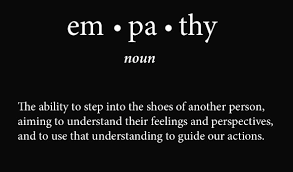“How wonderful it is that nobody need wait a single moment before starting to improve the world.” — Anne Frank
The globalization of animal rescue.
In the last decade, the world has become more interconnected than ever before thanks to rapidly evolving technology and collaboration between countries and people. It’s no different in animal rescue where technology can bring together like-minded rescuers and organize their operations in ways that maximize saving animals.
The expansion of the Doobert platform globally
As you know, Doobert is a technology platform which simply means it is software with the potential to connect other features and technologies. Doobert was lucky enough to be built in a time where cloud computing was the norm and companies like Amazon Web Services provide simple, cost-efficient ways to deploy technology to a global market in rapid fashion.
The focus for Doobert in the last five years has been to provide the technology tools animal rescues and animal shelters need to save more animals. Our mission is to connect the passionate animal rescue volunteers with the organizations that need them and provide them the technology sorely lacking for more efficient collaboration.
Therefore, it was inevitable that the day would come that the technology that Doobert provides would pique the curiosity of our friends and fellow animal lovers in countries around the world. As I have been working with rescue organizations in Australia, India and the U.K. to discuss the possibilities of opening Doobert to their regions, there are some principles that I have employed based upon my experience working for a global company (in my day job) that I plan to utilize in the Doobert global roll-out to ensure that my efforts to help are received in the way intended.
These lessons could be applied whether you are joining the animal rescue movement as a new organization, or expanding your saving operations to new regions of the U.S. But they are critical to the success of your mission when you are thinking globally.
1. Lead by learning


Sure, it sounds easy to assume we know what to do when you find out that India has an estimated 37 million stray dogs roaming the street. That’s where the U.S. was only a decade or so ago and look where we are now. We obviously know what we’re doing right? They should listen to us and follow the plan of attack that we did to fix the problem in ½ the time.
But a quick peek into the next layer of information and you will learn that India does not have the same local animal shelter infrastructure that exists in the U.S., Canada and Australia. They have the passionate animal lovers and dedicated animal rescuers like we do, but things do not work the same way as they do here in the U.S. and if you jump in thinking that you know what the solution to the problem is, you might just find your solutions do not solve the problem at hand.
2. Teach by understanding
If you set out to teach someone in a country how to speak English, where would you start? Would you jump right in with lesson #1, the English alphabet or would you ask some questions to understand whether your student has any knowledge about English that you could build upon?


In my discussions with different animal rescue organizations in India, I came to understand that volunteer ground transport is not one of their biggest issues that they need to solve with technology. Instead multiple groups suggested that a way to connect tourist visiting the country, with animal rescue groups looking to place animals. When the tourists return to their home countries, they are able to transport animals for a lot less on airlines if they are traveling on the same flight. Remember that when all you have is a hammer, everything in the world looks like a nail. Take time to understand what tools are needed.
3. Support by empathizing


If you are entering a new market, country or community, start by empathizing as you listen. Feel the passion of the person you are talking to and understand their goals and the barriers preventing them from attaining those goals.
It won’t be long until many more U.S. based rescuers turn their attention, passion and resources to other countries and communities around the world in an effort to save even more animals. Hopefully, their approach will be filled with the desire of knowledge and not the passion of arrogance.

















